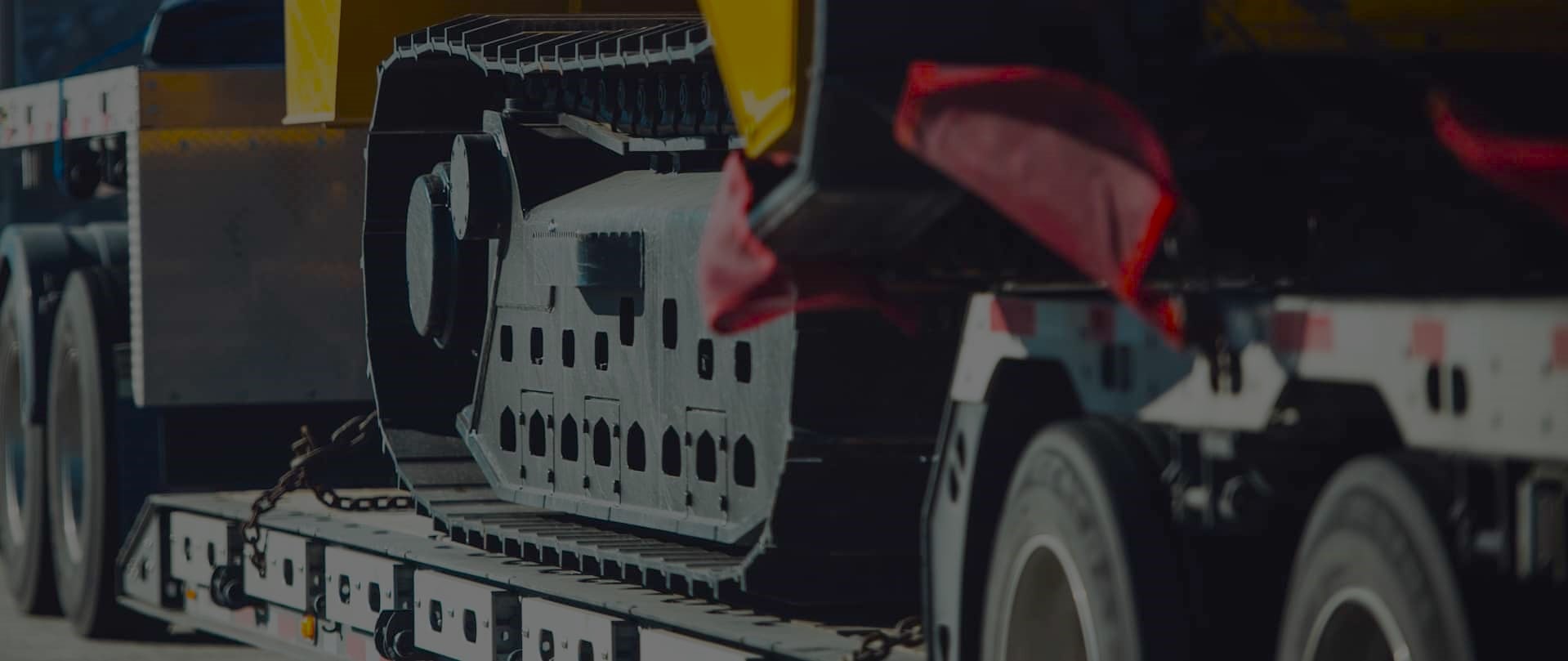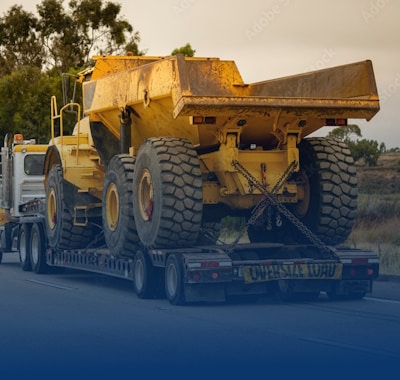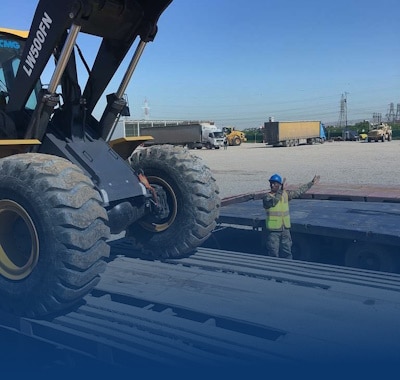The Environmental Implications of Moving Heavy Machinery
Freedom Heavy Haul can offer expedited Pickup and Delivery for any size shipment anywhere in the USA. Contact us today for No Hassle, No Pressure Pricing.
Heavy machinery plays a central role in industries like construction, mining, and transportation. Its movement, however, has significant effects on our surroundings. Emissions from transportation methods, for example, contribute to air pollution and climate change. Understanding these factors is essential for minimizing harm.
At Freedom Heavy Haul, we prioritize reliability and sustainability. Our customers trust us to deliver professional service while reducing environmental impact. Real testimonials highlight our commitment to safe and efficient equipment transport.
Experts like Dr. Jean-Paul Rodrigue emphasize the importance of sustainable practices in this field. By adopting eco-friendly methods, we can lessen the impact on our planet. This guide explores how responsible transportation can make a difference.
Setting the Stage: The Environmental Footprint of Heavy Machinery
Industries such as construction, mining, and logistics rely heavily on large-scale machinery. These sectors are essential for economic growth, but their operations leave a significant mark on the planet. From noise disruptions to fuel consumption, the effects are far-reaching. Addressing these challenges is critical for a sustainable future.
Scope and Importance in Construction, Mining, and Transportation
Large machinery is the backbone of modern infrastructure. In construction, it enables the building of roads, bridges, and skyscrapers. Mining operations depend on it for extracting valuable resources. Transportation logistics use it to move goods efficiently. However, these activities come with a cost. Noise pollution disrupts communities, while fuel emissions contribute to air quality issues.
We’ve seen firsthand how these factors influence industry practices. For example, stricter regulations have pushed companies to adopt quieter, more efficient machinery. This shift highlights the importance of balancing productivity with environmental responsibility.
Historical Context and Evolving Practices
Historically, heavy machinery was designed for power, not sustainability. Early models were noisy, fuel-intensive, and often overlooked pollution concerns. Over time, awareness grew, and practices began to change. Innovations in technology and materials have played a key role in this evolution.
Today, emerging technologies like electric engines and advanced materials are reshaping the industry. These advancements reduce noise, lower fuel consumption, and minimize pollution. As one expert noted,
“The future of heavy machinery lies in smarter, cleaner solutions.”
We’re committed to staying ahead of these trends. By embracing eco-friendly practices, we help our clients meet both operational and environmental goals. This approach ensures a positive effect on the planet while maintaining efficiency.
- Noise reduction strategies are now a priority for many companies.
- Fuel-efficient machinery is becoming the standard in construction and mining.
- Pollution control measures are integrated into modern transportation logistics.
Adapting to a stricter environmental agenda is no longer optional—it’s essential. By combining real-world testimonials with scholarly insights, we provide a robust historical context for these changes. Together, we can build a more sustainable future.
Key Factors Shaping Environmental Impact
Several technical elements influence how machinery transport impacts the environment. Emissions, noise, and fuel consumption are critical aspects that shape this footprint. Understanding these factors helps in identifying areas for improvement and adopting sustainable practices.
Emissions, Noise, and Fuel Consumption
Engines and combustion processes are primary sources of emissions. These directly contribute to air pollution, affecting both local and global air quality. For example, diesel engines release nitrogen oxides and particulate matter, which harm human health and ecosystems.
Noise pollution is another significant concern. Loud machinery disrupts communities and wildlife, leading to long-term stress and habitat degradation. Fuel consumption also plays a role, as inefficient engines increase operational costs and environmental harm.
Direct, Indirect, and Cumulative Effects
The environmental effects of machinery transport can be direct, indirect, or cumulative. Direct effects include immediate air and noise pollution from engines. Indirect effects involve resource extraction and manufacturing processes, which further strain the environment.
Cumulative effects result from prolonged exposure to these factors. For instance, consistent noise and emissions can degrade ecosystems over time. Addressing these challenges requires a holistic approach, focusing on both immediate and long-term solutions.
By analyzing emission rates and fuel efficiency, we can identify potential areas for improvement. This sets the stage for discussions on technological interventions and operational modifications in subsequent sections.
Understanding the Environmental Impact of Heavy Equipment Transport
Real-world examples offer valuable insights into the ecological challenges of moving large machinery. By examining practical scenarios, we can better understand how equipment transport affects air quality, ecosystems, and public health. These case studies highlight the importance of adopting sustainable practices to minimize harm.
Real-World Examples and Case Studies
One notable case study involves a construction project in California. The team monitored air quality and pollutant levels during equipment transport. Results showed a significant increase in particulate matter, which directly impacted local communities. This example underscores the need for cleaner practices.
Another study focused on a mining operation in Colorado. By implementing regular maintenance and operator training, the company reduced emissions by 15%. This demonstrates how consistent practices can lead to measurable improvements in environmental performance.
We’ve also seen success with our heavy equipment shipping services. By optimizing routes and using fuel-efficient vehicles, we’ve minimized emissions while maintaining efficiency. These efforts align with our commitment to sustainability.
| Case Study | Location | Key Findings |
|---|---|---|
| Construction Project | California | Increased particulate matter affected local air quality. |
| Mining Operation | Colorado | Regular maintenance reduced emissions by 15%. |
| Shipping Services | Nationwide | Optimized routes and fuel-efficient vehicles minimized emissions. |
These examples illustrate the direct and indirect effects of equipment transport. By adopting best practices, we can reduce pollutants and protect ecosystems. Consistent training and maintenance are essential for achieving these goals.
As one expert noted,
“Sustainable practices in machinery logistics are not just beneficial—they’re necessary for long-term ecological balance.”
We’re committed to leading the way in this effort, ensuring a positive impact on both industry and environment.
The Role of Clean Technologies and Modern Fleet Upgrades
Clean technologies are transforming how industries handle large-scale operations. From electric machinery to advanced engines, these innovations address critical issues like emissions and fuel efficiency. We’re leading the charge in adopting these solutions to ensure a sustainable future.
Transitioning to Electric and Hybrid Machinery
Electric and hybrid machinery is becoming a game-changer in the construction and transport sectors. These alternatives reduce reliance on fossil fuels and cut down on harmful emissions like nitrogen oxide. For example, hybrid excavators combine electric power with traditional engines, offering both efficiency and reduced environmental harm.
We’ve seen significant benefits in real-world applications. Companies using electric machinery report lower operational costs and improved performance. This shift is not just about sustainability—it’s also a smart strategy for long-term success.
Innovations in Engine Technology and Efficiency
Modern engines are designed to maximize efficiency while minimizing pollution. Advanced combustion systems and emission control technologies are at the forefront of this progress. These innovations reduce fuel consumption and lower harmful emissions, addressing a major issue in the industry.
For instance, updated diesel engines now meet stricter emission standards. This ensures cleaner operations without compromising power. By integrating these technologies, we’re helping clients achieve both environmental and operational goals.
| Technology | Benefits | Applications |
|---|---|---|
| Electric Machinery | Zero emissions, lower fuel costs | Construction, logistics |
| Hybrid Engines | Reduced emissions, improved efficiency | Mining, transportation |
| Advanced Diesel Engines | Lower nitrogen oxide emissions, compliance with standards | Heavy hauling, industrial operations |
As the demand for heavy haul services in the renewable energy grows, clean technologies are more important than ever. By embracing these advancements, we’re setting a new standard for sustainability in the industry.
“The future of machinery logistics lies in smarter, cleaner solutions.”
We’re committed to staying ahead of these trends, ensuring our clients benefit from both short-term improvements and long-term efficiencies. Together, we can build a greener, more sustainable future.
Operational Practices to Minimize Ecological Effects
Effective operational practices are key to reducing ecological harm in machinery logistics. By focusing on maintenance and training, we can ensure both efficiency and environmental care. These practices not only enhance performance but also address critical health and safety concerns.
Regular Maintenance and Optimized Performance
Consistent maintenance routines are essential for optimal machine performance. Regular checks reduce wear and tear, ensuring equipment operates efficiently. This minimizes emissions, including harmful oxide pollutants, and extends machinery lifespan.
For example, a project in Texas showed that detailed maintenance schedules lowered emissions by 12%. This highlights the positive impact of proactive upkeep on both operations and the environment.
Effective Operator Training and Best Practices
Skilled operators are crucial for sustainable operations. Training programs focus on safety, efficiency, and eco-friendly practices. Well-trained operators reduce fuel consumption and prevent unnecessary strain on machinery.
In one case, a mining company implemented a comprehensive training development program. This led to a 20% reduction in fuel use and improved health and safety records. Such results demonstrate the value of investing in operator education.
- Regular maintenance ensures optimal performance and reduces emissions.
- Operator training leads to safer, more efficient operations.
- Detailed schedules lower oxide emissions and address concerns.
- Ongoing development is central to maintaining industry standards.
| Practice | Benefit | Example |
|---|---|---|
| Maintenance | Reduced emissions, longer lifespan | Texas project lowered emissions by 12% |
| Training | Improved safety, lower fuel use | Mining company reduced fuel use by 20% |
By prioritizing these practices, we ensure a positive impact on both operations and the environment. As one expert noted,
“Sustainable practices in machinery logistics are essential for long-term ecological balance.”
Sustainable Practices and Regulatory Considerations
Sustainability in machinery logistics is driven by strict regulations and innovative practices. These measures ensure that operations are efficient while minimizing harm to the ecosystem. By aligning with environmental policies, we can achieve a balance between productivity and ecological responsibility.
Industry Regulations and Environmental Policies
Stringent regulations play a vital role in shaping sustainable practices. For example, compliance with nitrogen emission standards helps protect air quality and local habitats. Policies also encourage the use of cleaner technologies, such as electric and hybrid truck fleets.
One effective framework is the integration of oversized load regulations. These guidelines ensure that transport operations minimize their environmental footprint while maintaining safety. By adhering to these standards, companies can reduce emissions and enhance their reputation.
Adoption of Recycled Materials and Resource Management
Recycled materials are increasingly used in machinery manufacturing and logistics. This approach reduces waste and conserves natural resources. For instance, recycled steel and aluminum are now common in truck construction, lowering the demand for raw materials.
Efficient resource management is another key factor. Optimizing land use and streamlining processes ensure that operations are sustainable. Companies that adopt these practices report significant cost savings and reduced environmental impact.
- Compliance with nitrogen standards protects air quality and ecosystems.
- Recycled materials reduce waste and conserve resources.
- Optimized land use and processes enhance sustainability.
- Cleaner technologies, like electric trucks, lower emissions.
By combining regulatory compliance with innovative practices, we can create a more sustainable future. As one expert noted,
“Sustainable logistics is not just a trend—it’s a necessity for long-term ecological balance.”
We’re committed to leading this effort, ensuring our operations benefit both industry and the environment.
Emerging Trends in Environmental Technology and Sustainable Transport
Advancements in technology are reshaping how we approach sustainable transport. From digital monitoring to innovative emission controls, these trends are setting new standards for eco-friendly practices. By integrating these solutions, we can reduce the ecological footprint of heavy machinery logistics while maintaining efficiency.
Smart Transportation Solutions and Digital Monitoring
Smart transportation systems are revolutionizing the industry. These solutions use real-time data to optimize routes, reduce fuel consumption, and minimize emissions. For example, GPS-enabled tracking ensures that machinery is transported efficiently, lowering operational costs and environmental harm.
Digital monitoring tools provide insights into performance and compliance. Sensors and analytics platforms track fuel usage, emissions, and equipment health. This data helps companies make informed decisions, enhancing both sustainability and productivity.
- Real-time tracking improves route efficiency and reduces fuel use.
- Data analytics enhance compliance with environmental standards.
- Digital tools offer actionable insights for sustainable operations.
Innovative Emission Control Methods
New technologies are addressing emission challenges in heavy machinery transport. Advanced filtration systems and catalytic converters reduce harmful pollutants like nitrogen oxides. These innovations ensure cleaner operations without compromising performance.
For example, hybrid engines combine electric power with traditional fuels, cutting emissions significantly. Companies adopting these methods report lower operational costs and improved environmental performance. As one expert noted,
“Innovative emission controls are essential for a sustainable future in machinery logistics.”
| Technology | Benefit |
|---|---|
| Hybrid Engines | Reduced emissions, improved efficiency |
| Advanced Filtration | Lower nitrogen oxide levels |
| Catalytic Converters | Cleaner exhaust emissions |
These trends are shaping the future of sustainable transport across the world. By adopting smart solutions and innovative methods, we can enhance our understanding of heavy machinery logistics while protecting the planet. Together, we’re building a greener, more efficient future.
Final Reflections on Minimizing Environmental Impact
Addressing climate change requires a shift in how we approach machinery logistics. At Freedom Heavy Haul, we are committed to reducing our ecological footprint through innovative practices and advanced technologies.
Modern vehicle technologies are at the forefront of sustainable change. By integrating cleaner solutions, we ensure that our transport operations meet the highest environmental standards. This commitment not only benefits the planet but also enhances operational efficiency.
We believe in continuous improvement. Our focus on sustainability drives us to adopt practices that minimize harm while maintaining excellence. Together, we can create a greener future for all.







